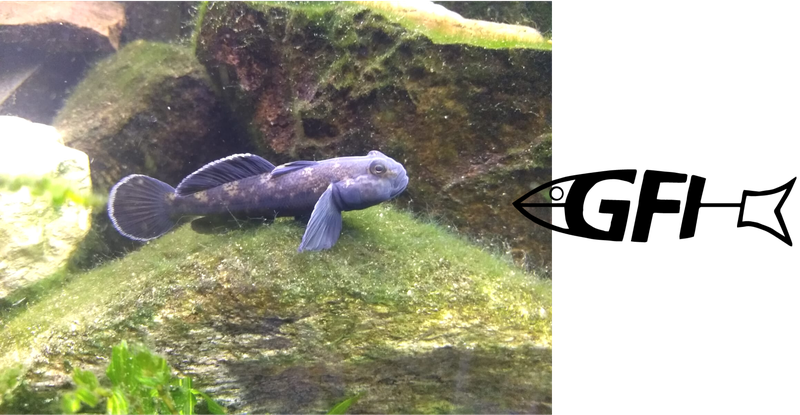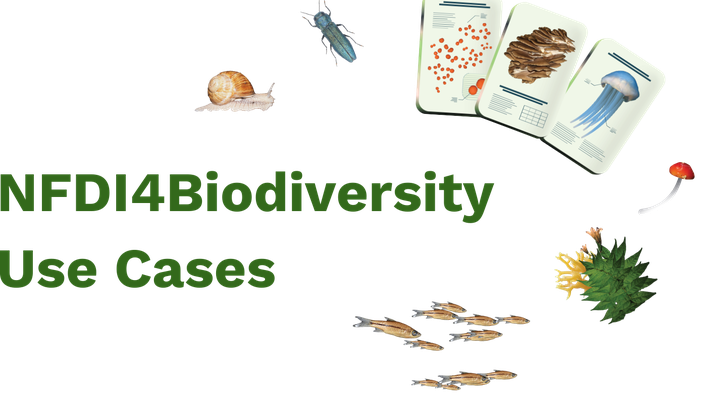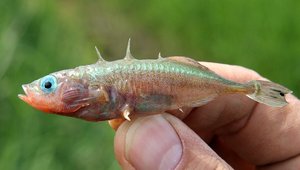Fish Atlas
"As a specialist fish society operating since 1995, we have extensive data on the distribution of marine and freshwater fish. We want to share this knowledge, regardless of administrative boundaries and fishing interests. It should be accessible to those who are committed to the conservation of biodiversity – and thus also to fish fauna."
Heiko Brunken, board member of the German Ichthyological Society (GfI)
About the German Ichthyological Society (GfI)
Many specialized agencies, conservation organizations and zoological societies have data, often compiled by volunteers, that hold immense potential for urgently needed research on biodiversity loss. This is also the case with the German Ichthyological Society (Gesellschaft für Ichthyologie e.V.) , an association of fish experts from science, fisheries and aquaristics. Since 1995, the GfI has been working to promote the scientific study of fish and to provide a German forum for information, communication and publication in the field of fish science. One of its aims is to contribute to the consideration of ecological criteria in the exploitation of fish stocks. It also provides targeted support for measures aimed at helping to protect the natural habitats of fish. A special focus is on the support of projects in species and biotope protection. Since 2003, GfI has been maintaining the Fish Species Atlas (Fischartenatlas) for Germany and Austria together with the Bremen University of Applied Sciences, which contains more than 100,000 data records on the distribution of all regional freshwater and marine fish species.

Goby; Photo: Glícia Calazans/GfI

How we work together
With the community for the community: The NFDI4Biodiversity Use Case Model
As a biodiversity and environmental data consortium, we work to make valuable knowledge sustainably available – and to find solutions that are actually needed. Around 20 use cases from the biodiversity community – the NFDI4Biodiversity Use Cases – help us to explore needs, identify challenges and work together to break new ground: towards data that is findable, accessible, interoperable, and reusable (see FAIR principles). One of them is the GfI, which is collaborating in NFDI4Biodiversity to make its fish data available to a wider user community.
The data
In its fish species atlas, which is unique for Germany and Austria, the GfI has more than 100,000 data records on the distribution of all regional freshwater and marine fish species. The data originate from literature research, from the fish species registers of the German federal states and other databases, and increasingly from fishologists themselves, who feed their observation data directly into the atlas. The field of citizen science as a data source is thus steadily gaining in importance.
The common goal
The GfI is keen to share its extensive knowledge on the occurrence of different fish species in order to contribute to their further research and protection. The goal of the collaboration in NFDI4Biodiversity is to make the data and tools (e.g. the data entry option via app as well as data visualizations) also accessible to a broad user community from science, administration and environmental education and to connect them to global databases. Another added value: Linking with climate, soil or other data via NFDI4Βiodiversity enables new perspectives and insights.
The current status
So far, this use case has worked to examine and expand the GfI database. Particular attention was paid to ensuring that all the necessary information needed to complete a meta-datasheet in ABCD format was provided. In cooperation with the Zoological Research Museum Alexander Koenig in Bonn, Germany, a BioCase provider was then set up to make the observation data in the database accessible via a standardized interface. This step makes the GfI database compatible with the NFDI4Biodiversity network, in which the use of the ABCD metadata standard plays a central role.
Legally Compliant Data Sharing: GfI Serves as a Practical Case for Legal Review on the Open Publication of Citizen Science Data
As part of NFDI4Biodiversity, a legal review was commissioned for the German Society for Ichthyology (GfI) to assess the conditions under which its extensive fish species data could be made available via international platforms such as GBIF.
The resulting expert opinion addresses key issues related to copyright, data protection, data ownership, and licensing. The conclusion: there are no fundamental legal barriers to publishing the data—provided, for instance, that contributors have given their consent and that terms of use are updated accordingly.
In doing so, the GfI plays a key role in enabling legally sound access to research data and offers a model for other projects with similar data structures. By connecting its dataset to GBIF, the GfI stands to make a significant contribution to biodiversity research and to the assessment of aquatic ecosystems.
Further details can be found in the blog article linked below.
Contact person
German Ichthyological Society (Gesellschaft für Ichthyologie e.V., GfI)
Heiko Brunken (heiko.brunken@hs-bremen.de), board member
www.ichthyologie.de
NFDI4Biodiversity
For general questions about the GfI use case:
Martin Friedrichs-Manthey (martin.friedrichs-manthey@idiv.de)
For technical questions about the GfI use case:
Claas-Thido Pfaff (claas-thido.pfaff@gfbio.org)
Another question about NFDI4Biodiversity? Write us via our contact form.
Discover other use cases
Learn more about the other natural history societies, museums, government agencies, and research institutions and projects with which we collaborate.
Gesellschaft deutschsprachiger Odonatologen e.V. (GdO)
Rund zwei Millionen Libellendaten, die auch Forschung und Naturschutz zur Verfügung stehen sollen – daran arbeiten wir mit den Libellenkundler:innen der GdO.
IÖR-Monitor
Visualisierbare Langzeitdaten zur Landnutzung und -bedeckung können die Biodiversitätsforschung enorm bereichern. Mit dem Leibniz-Institut für ökologische Raumentwicklung e.V. (IÖR) arbeiten wir daran, die Daten des IÖR-Monitor in NFDI4Biodiversity zu integrieren.
Übersicht aller Use Cases
Hier geht es zu allen NFDI4Biodiversity-Use-Cases im Überblick.
